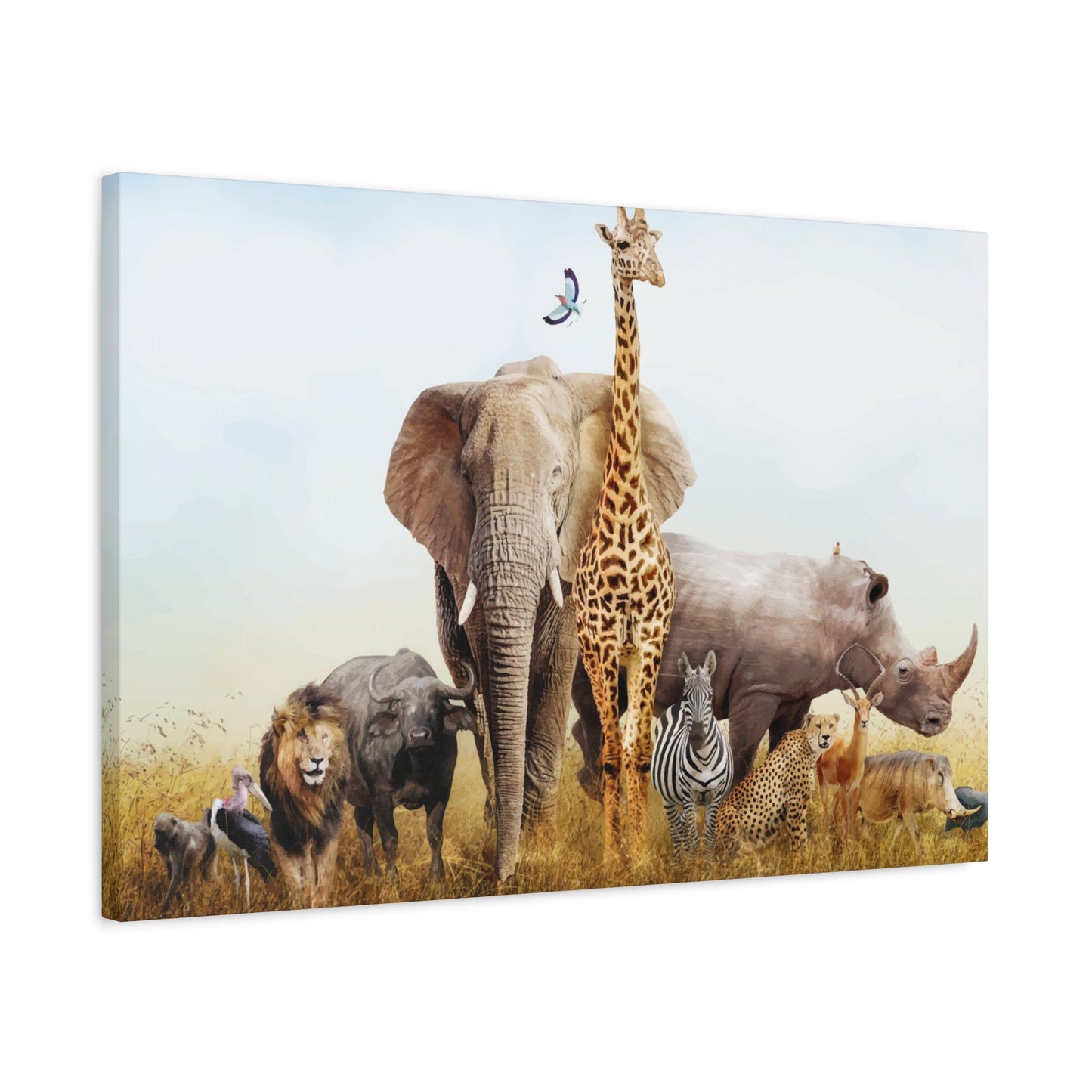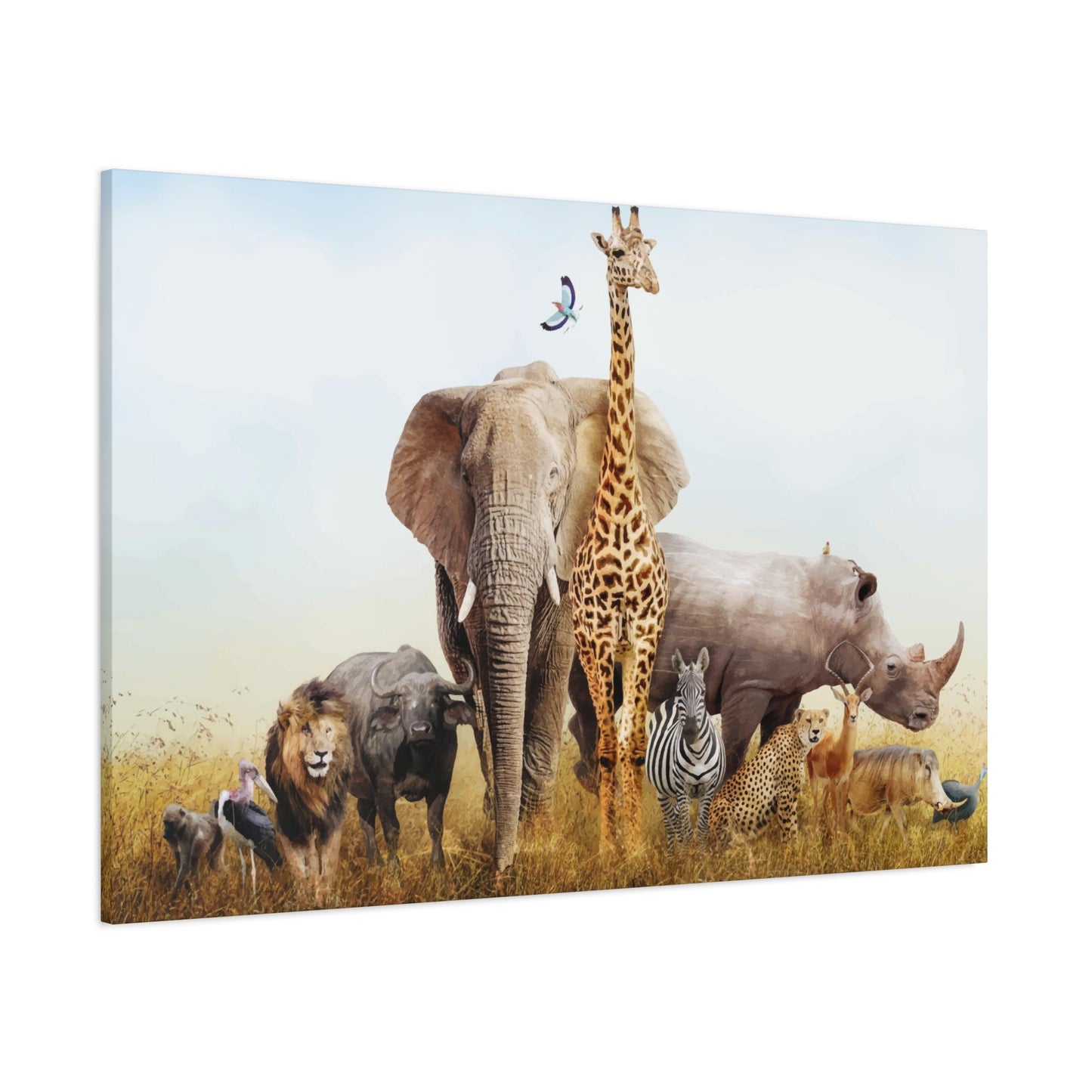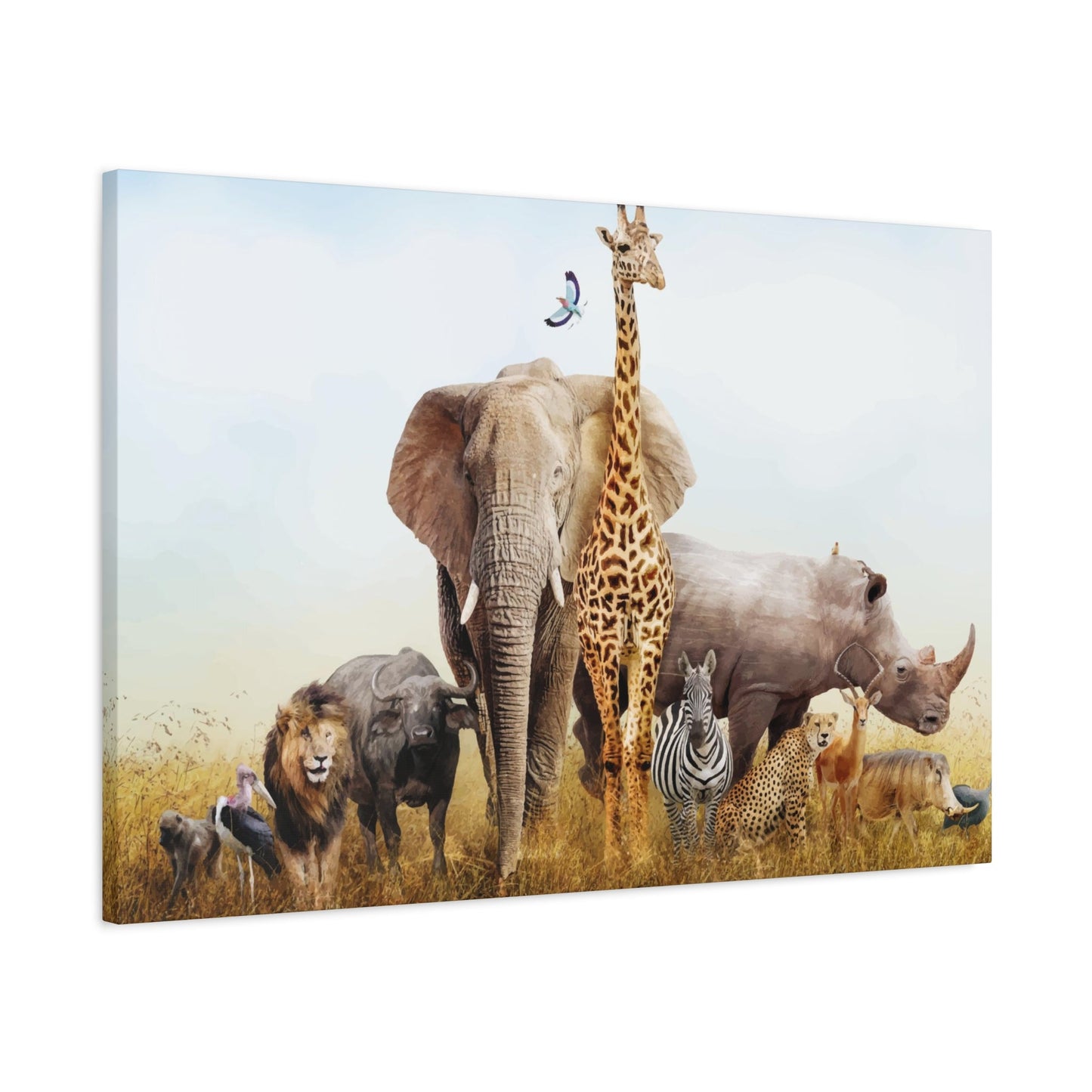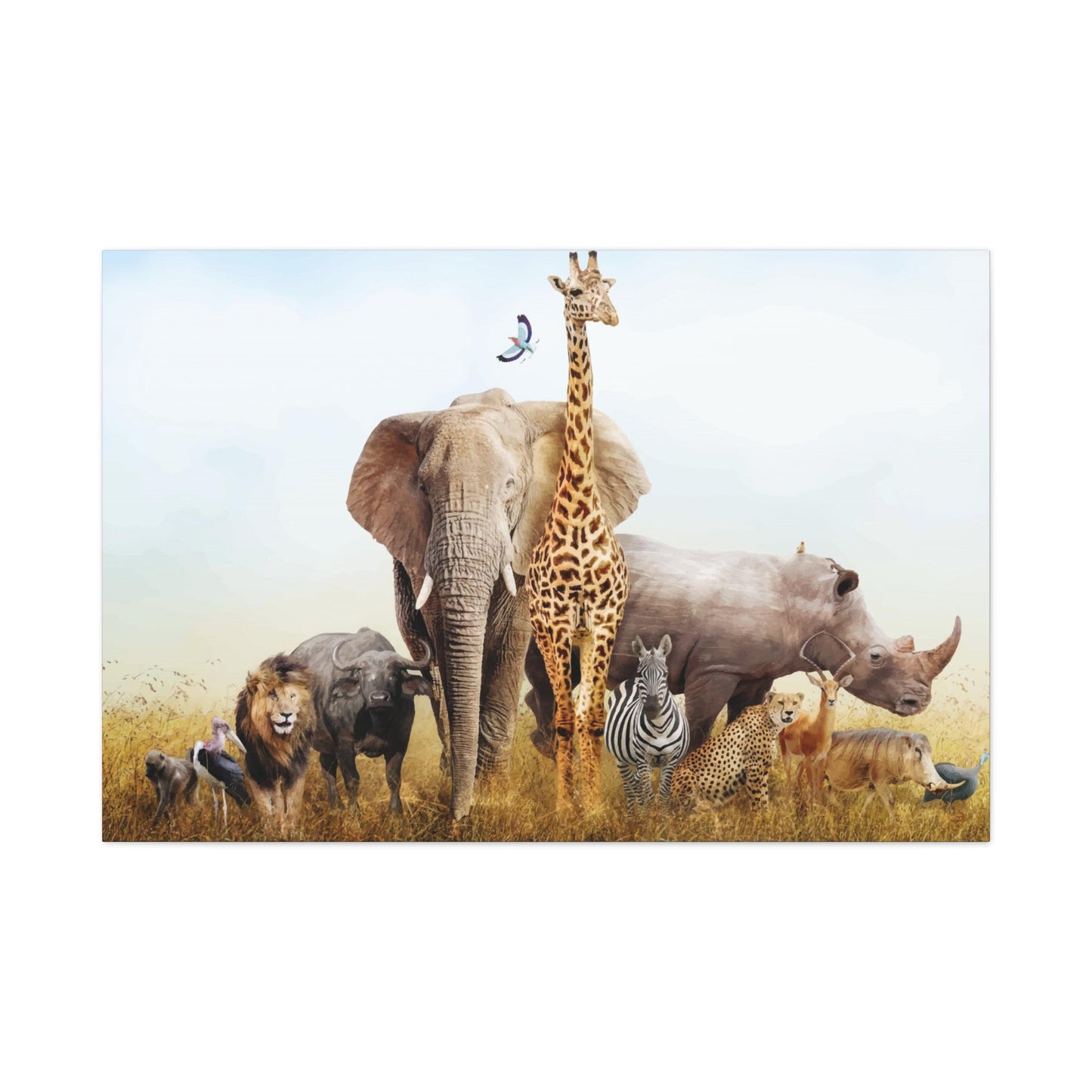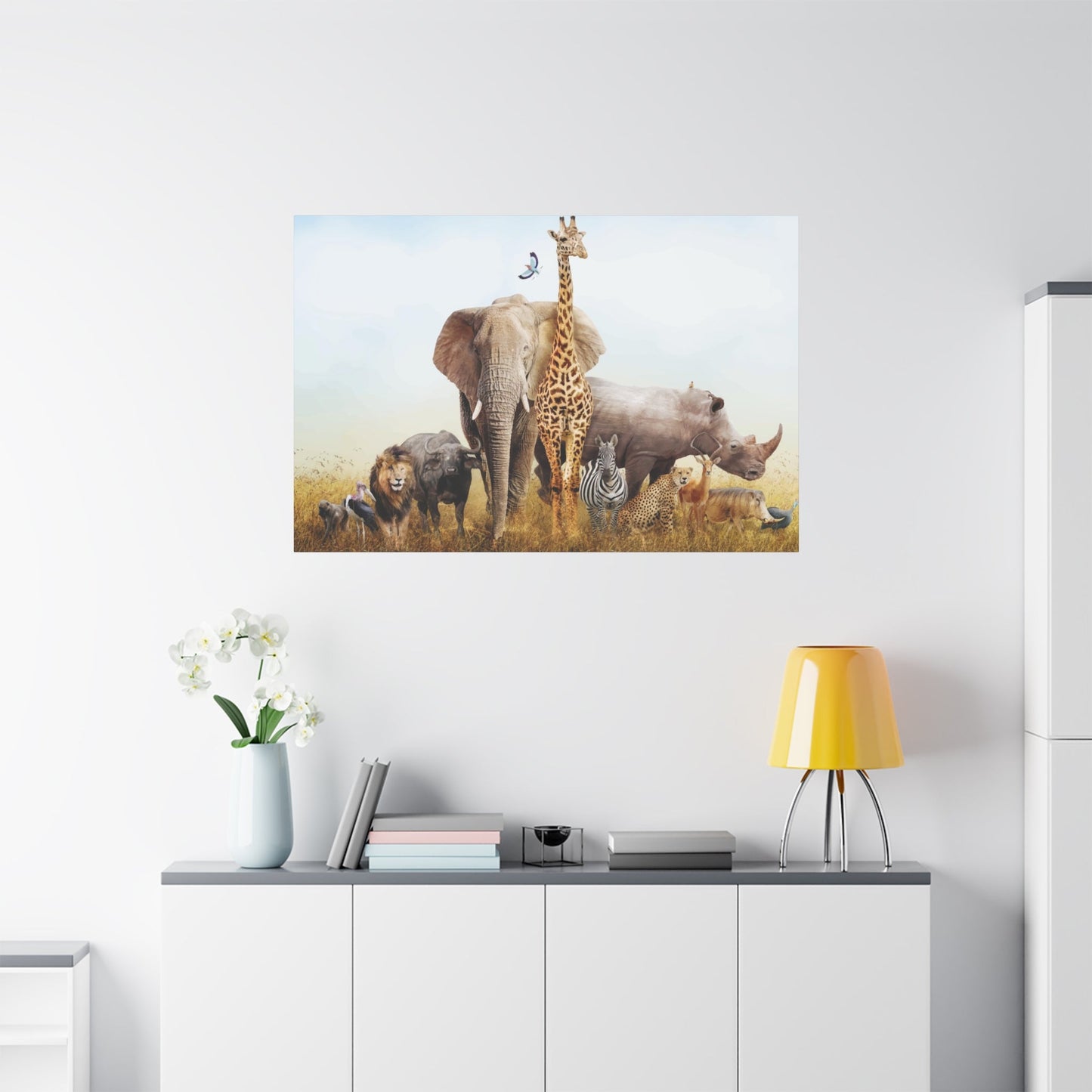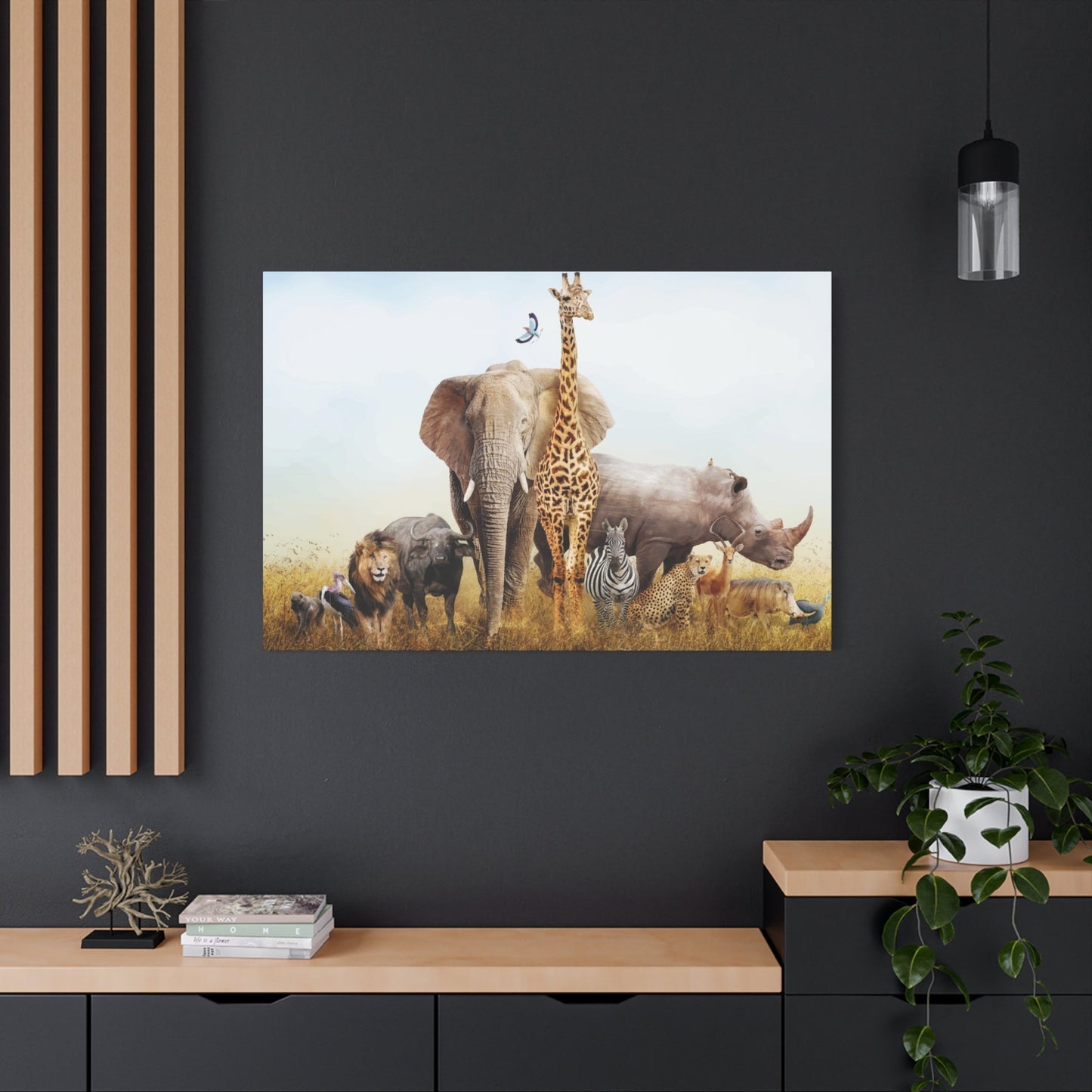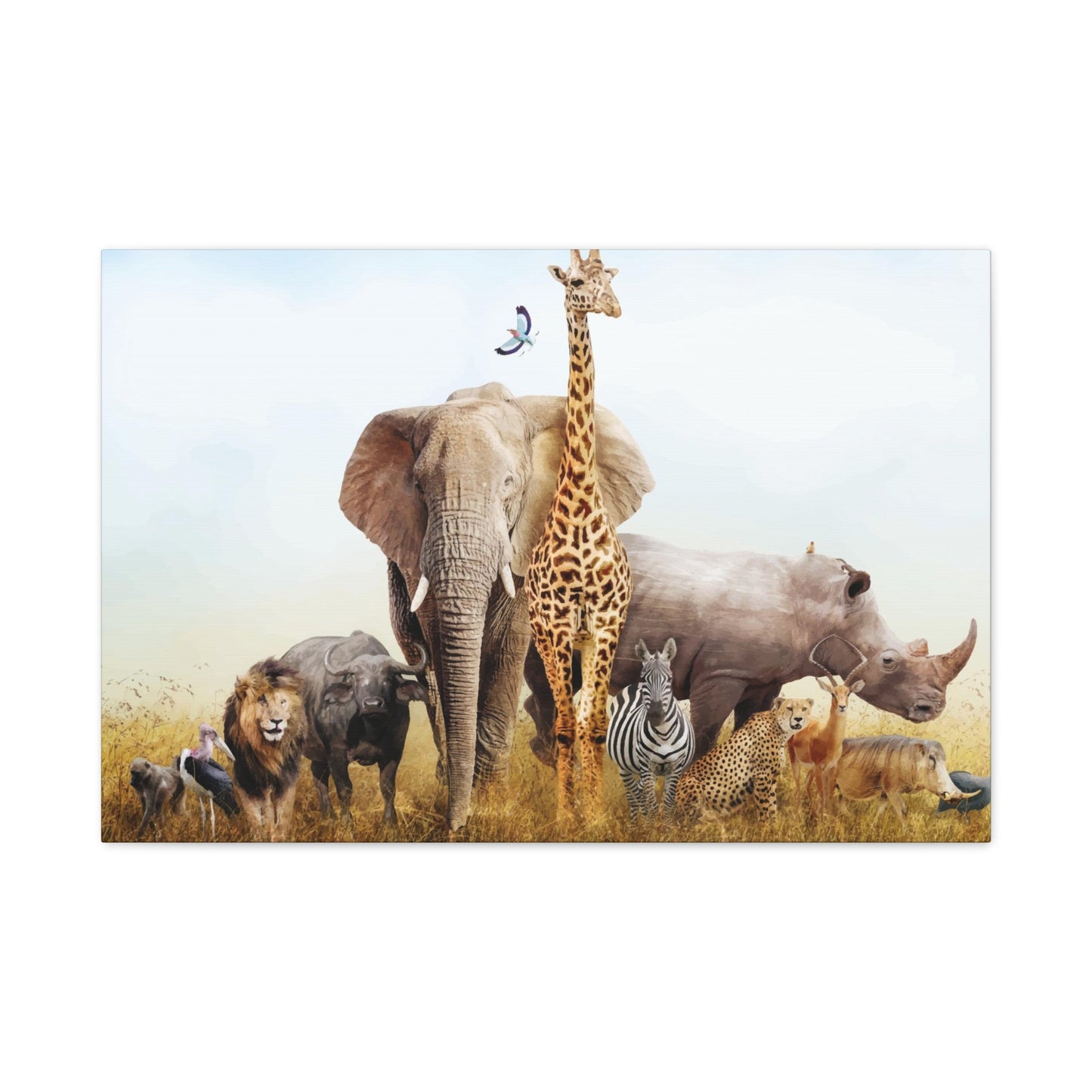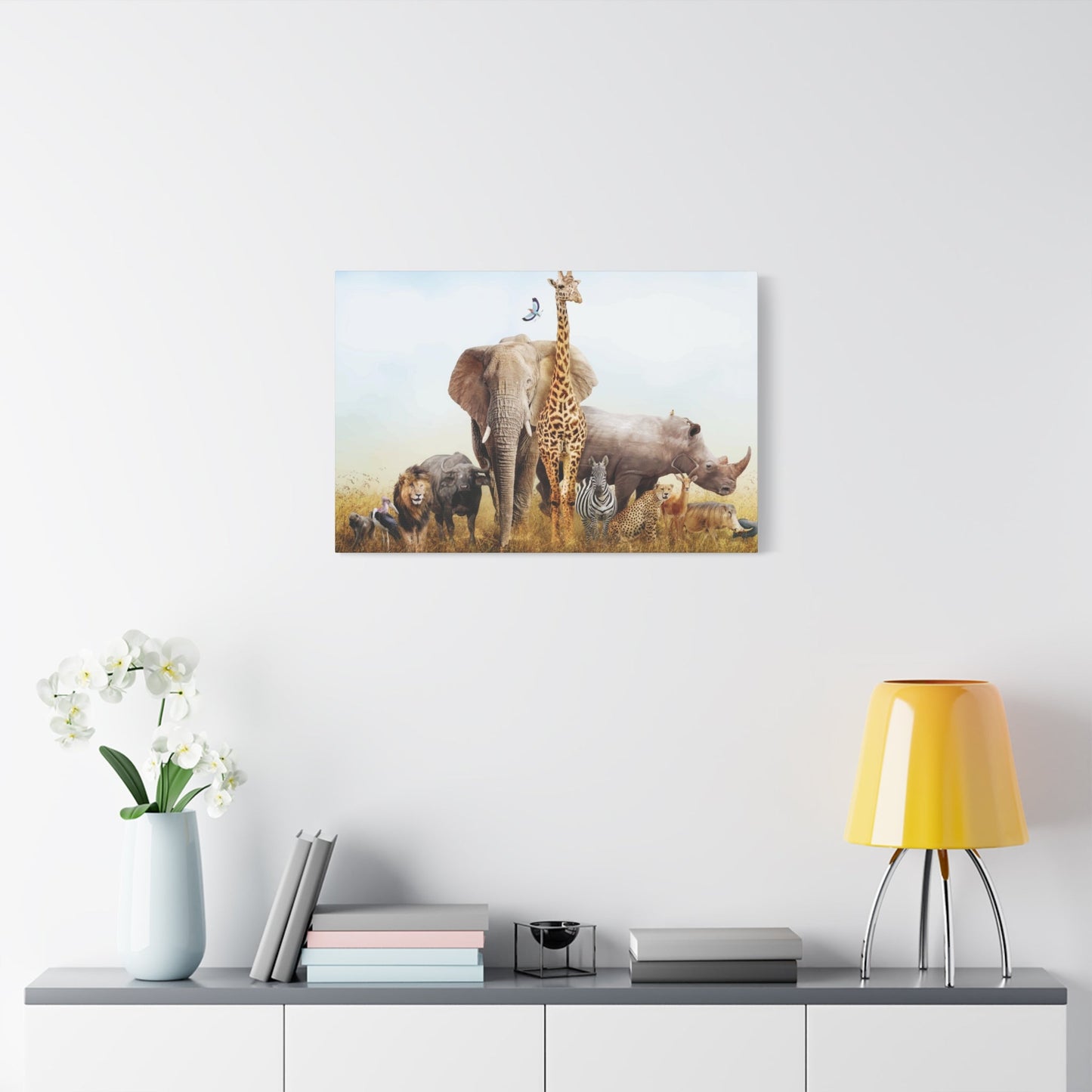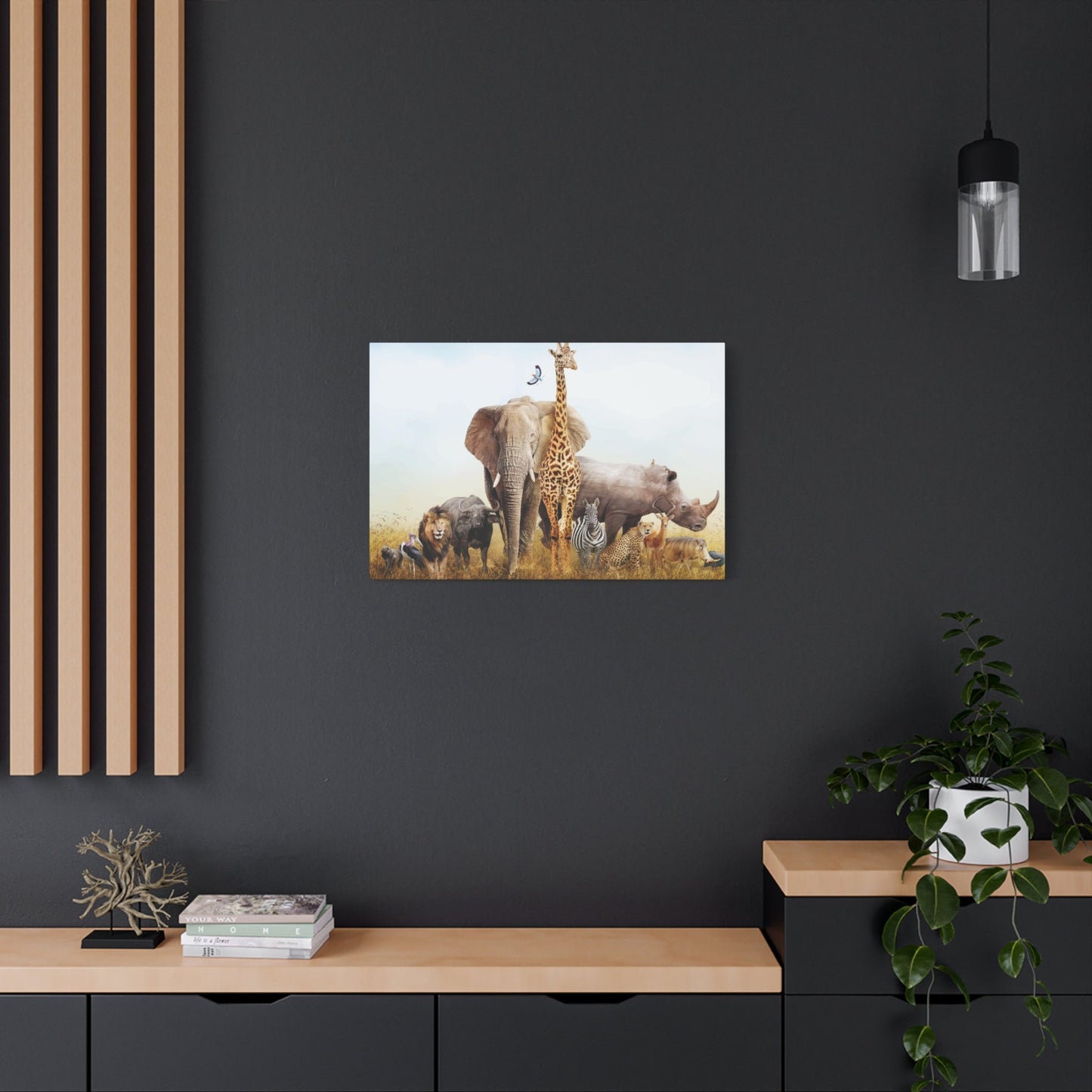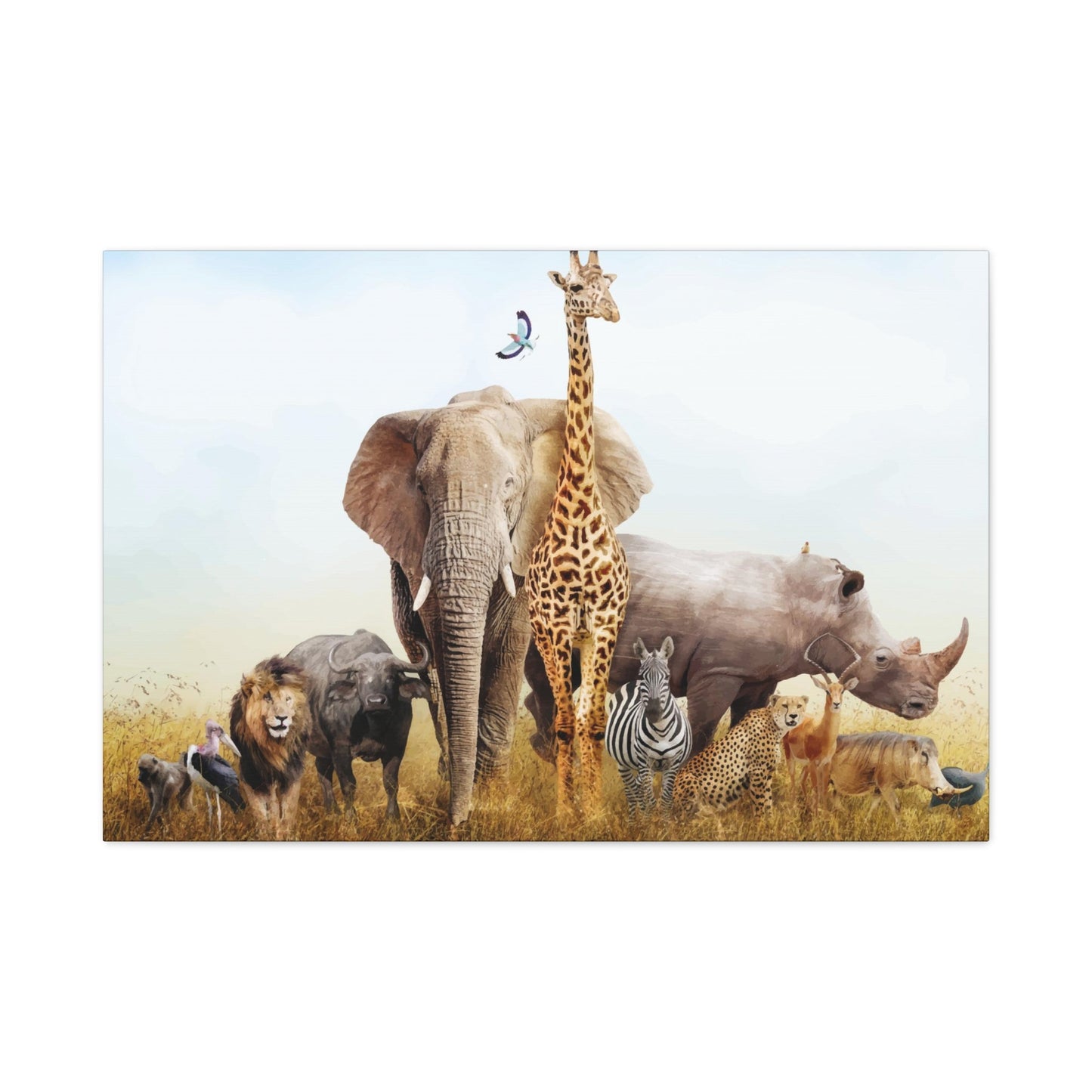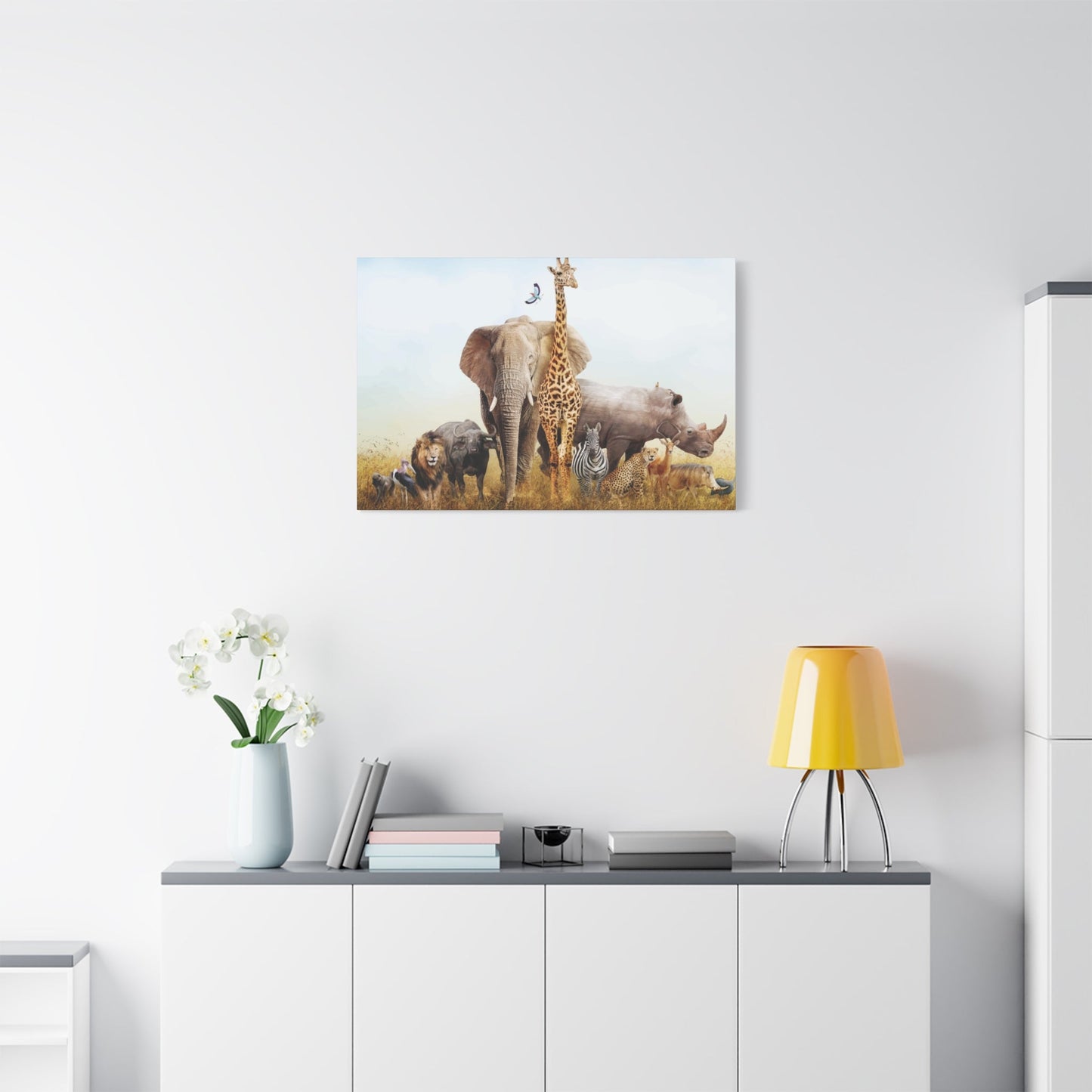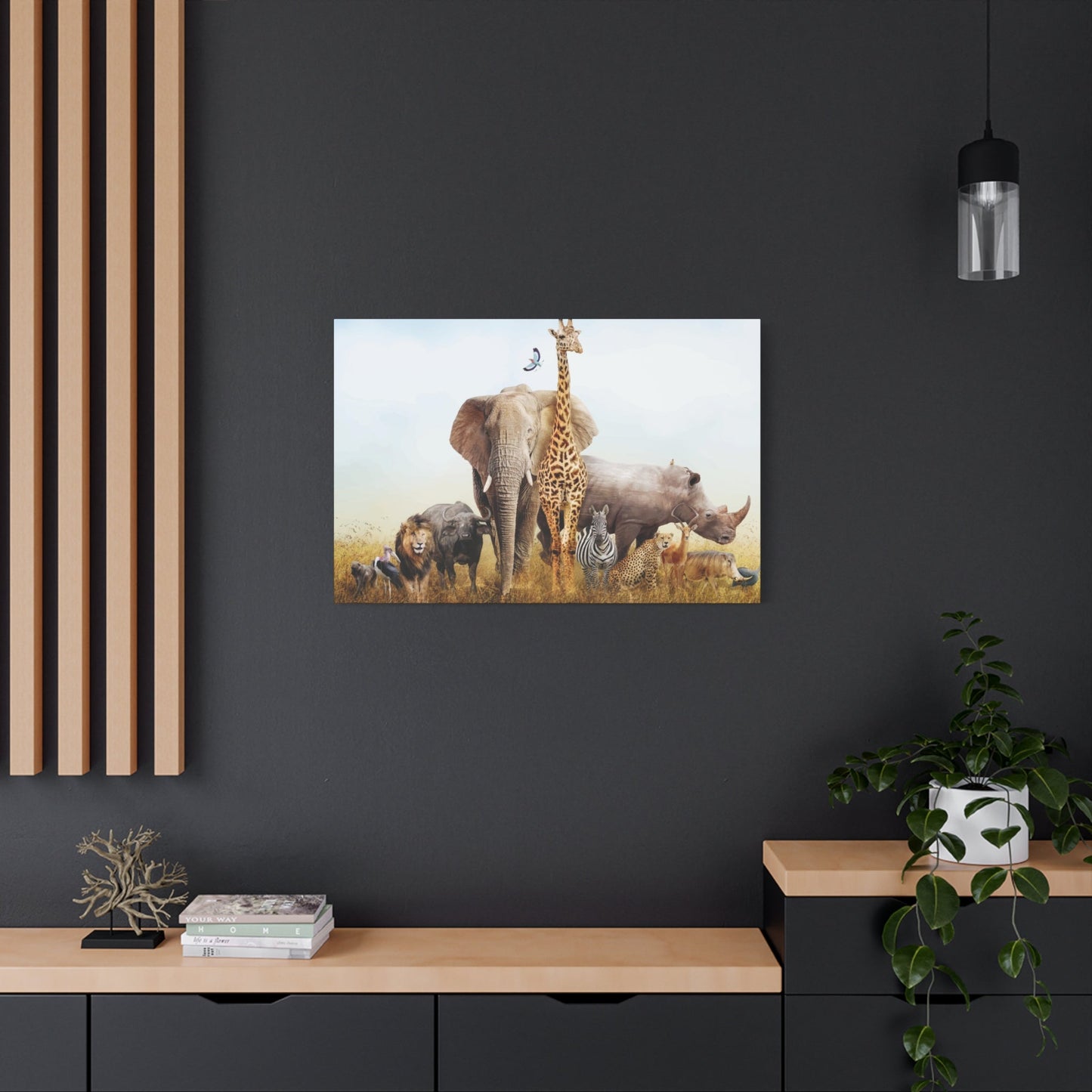Artistic Animal Kingdom Wall Art Paintings That Celebrate Nature
The world of animal kingdom art represents one of humanity's most enduring and captivating artistic traditions. From ancient cave paintings depicting hunting scenes to contemporary galleries showcasing wildlife conservation messages, artists have continuously drawn inspiration from the natural world's magnificent creatures. This artistic journey through the animal kingdom reveals not only technical mastery but also deep emotional connections between humans and the wildlife that shares our planet.
Animal kingdom paintings serve as windows into both the natural world and the human psyche, offering viewers opportunities to connect with creatures they may never encounter in their daily lives. These artworks transcend mere representation, becoming powerful vehicles for storytelling, conservation awareness, and cultural expression. The brushstrokes that capture a lion's mane or the delicate rendering of a butterfly's wing carry within them centuries of artistic tradition and innovation.
The significance of wildlife art extends far beyond aesthetic appreciation. These paintings document species that may no longer exist, preserve cultural relationships with animals, and inspire future generations to value and protect our natural heritage. Each canvas becomes a testament to the artist's observation skills, technical abilities, and emotional response to the animal kingdom's endless diversity and beauty.
Wildlife on Canvas: Animal Kingdom Art
Creating wildlife art requires artists to develop specialized skills that go beyond traditional figure drawing or landscape painting. The challenge lies in capturing not just the physical appearance of animals but their essence, behavior, and the unique characteristics that make each species distinct. Artists working in this genre must become keen observers of animal anatomy, movement patterns, and habitat interactions.
The process of translating three-dimensional creatures onto two-dimensional surfaces demands understanding of animal proportions, muscle structure, and the way light interacts with different types of fur, feathers, scales, and skin. Wildlife artists often spend countless hours studying their subjects, whether through field observation, photography, or visits to zoos and wildlife sanctuaries. This dedication to accuracy helps create paintings that resonate with viewers and honor the subjects being portrayed.
Technical considerations in wildlife painting include color theory specific to animal coloration, understanding how environmental lighting affects perception of animal forms, and mastering various brushwork techniques to represent different textures. The artist must also consider composition elements such as background environments, seasonal changes, and the relationship between individual animals and their surroundings.
Many contemporary wildlife artists combine traditional painting techniques with modern tools and references. Digital photography allows for detailed study of animal features that might be missed during brief field encounters. High-speed photography reveals movement patterns and expressions that inform the artist's understanding of animal behavior and personality.
The emotional connection between artist and subject often determines the success of wildlife paintings. Artists who develop genuine appreciation and respect for their animal subjects tend to create more compelling and authentic artworks. This connection translates into paintings that capture not just physical likeness but the spirit and character of the creatures being depicted.
Wildlife art also serves educational purposes, helping viewers learn about animal species, their behaviors, and their roles in ecosystem balance. Many artists partner with conservation organizations, using their talents to raise awareness about endangered species and environmental threats. These collaborations demonstrate how art can become a powerful tool for positive change and environmental stewardship.
The market for wildlife art continues to grow as people seek connections with nature in increasingly urbanized environments. Collectors value these works not only for their aesthetic qualities but also for their ability to bring natural beauty into homes and workplaces. This appreciation supports artists who dedicate their careers to documenting and celebrating the animal kingdom through their creative expressions.
Masterful Paintings of the Animal World
Throughout art history, certain painters have distinguished themselves through exceptional ability to capture the essence of animal subjects. These masters developed techniques and approaches that continue to influence contemporary wildlife artists. Their works demonstrate various ways artists can interpret animal subjects, from highly detailed realistic portrayals to impressionistic interpretations that capture mood and atmosphere.
Renaissance masters like Albrecht Dürer set early standards for animal painting with works such as his famous rhinoceros woodcut and detailed studies of rabbits and other creatures. Dürer's meticulous attention to detail and scientific accuracy established precedents for wildlife art that emphasized both artistic skill and natural history documentation. His approach influenced generations of artists who sought to combine artistic expression with scientific observation.
The Dutch Golden Age produced numerous animal specialists, including Melchior d'Hondecoeter, who became renowned for his elaborate bird paintings. These works often featured exotic species in carefully composed garden settings, reflecting both artistic virtuosity and the period's fascination with natural history collecting. The technical precision required to render individual feathers, beaks, and bird postures demonstrated the highest levels of observational skill and painterly technique.
George Stubbs revolutionized horse painting in 18th-century England through his anatomical studies and innovative compositions. His dedication to understanding equine anatomy through dissection and detailed study resulted in paintings that captured both the physical power and elegant beauty of horses. Stubbs' work elevated animal painting from decorative craft to serious artistic endeavor, earning recognition alongside history paintings and portraits.
French animal painter Rosa Bonheur broke gender barriers while establishing new standards for livestock and wildlife portraiture. Her monumental painting "The Horse Fair" demonstrated that animal subjects could carry the same dramatic weight and artistic significance as traditional human subjects. Bonheur's success opened doors for other artists to pursue animal painting as legitimate artistic specialization.
American artists like John James Audubon combined artistic talent with scientific methodology to create comprehensive visual records of bird species. Audubon's life-sized bird paintings, created for "The Birds of America," required innovative techniques to capture accurate proportions and natural poses. His work demonstrates how artistic skill can serve both aesthetic and scientific purposes, creating lasting contributions to both fields.
Modern masters such as Wilhelm Kuhnert brought new approaches to wildlife painting through plein air techniques and focus on animals in their natural habitats. Kuhnert's African wildlife paintings, created during extensive field expeditions, captured the grandeur of large mammals in authentic environmental settings. His work influenced the development of wildlife art as documentation of vanishing wilderness areas and threatened species.
Contemporary masters continue pushing boundaries in animal kingdom art, incorporating new materials, techniques, and conceptual approaches. Artists like Robert Bateman combine photorealistic detail with environmental messaging, creating paintings that serve both artistic and conservation purposes. These modern approaches demonstrate how traditional animal painting techniques can address contemporary concerns about wildlife preservation and environmental protection.
Capturing Animal Majesty in Art
The concept of majesty in animal art encompasses the artist's ability to convey the nobility, power, and dignity inherent in wild creatures. This artistic challenge requires technical skill combined with deep understanding of animal behavior and the natural hierarchies that exist within the animal kingdom. Capturing majesty involves more than accurate representation; it requires the artist to communicate the essential character and presence of their subjects.
Lions have long served as symbols of majesty in art, representing courage, strength, and royal authority. Artists approaching lion subjects must balance the animal's physical power with the regal bearing that has made lions symbols of leadership across cultures. The challenge lies in rendering the impressive mane structure, powerful musculature, and piercing gaze while maintaining the dignity associated with this apex predator.
Eagles and other birds of prey present unique opportunities for expressing majesty through their command of aerial spaces and sharp hunting instincts. The spread wings, keen eyesight, and effortless flight patterns of these birds translate into artistic compositions that emphasize freedom, power, and mastery over their environment. Artists must understand wing anatomy and flight mechanics to create convincing representations of these magnificent creatures.
Large mammals such as elephants, rhinoceros, and buffalo offer artists chances to explore themes of ancient wisdom, endurance, and primal strength. The massive scale and weathered features of these animals suggest connections to prehistoric times and natural forces beyond human control. Capturing their majesty requires understanding how size, texture, and posture contribute to impressions of timeless power and dignity.
Marine life presents different challenges for expressing majesty, particularly with species like whales, sharks, and dolphins. The underwater environment adds complexity to lighting and compositional elements while the fluid movement of marine animals requires different artistic approaches than land-based subjects. The majesty of ocean creatures often relates to their adaptation to aquatic environments and their roles as masters of underwater realms.
Predatory animals naturally embody majesty through their position at the top of food chains, but artists can also find majesty in gentler creatures. Deer, horses, and even smaller animals can be portrayed with dignity and grace that speaks to their perfect adaptation to natural environments and their roles in ecosystem balance. The key lies in recognizing and emphasizing the unique qualities that make each species remarkable.
Color choices play crucial roles in conveying majesty, with artists often employing rich, saturated hues that suggest luxury and importance. Golden tones, deep blues, and vibrant earth colors can enhance the sense of nobility in animal subjects. The interaction between color and light becomes particularly important when attempting to create atmosphere that supports the majestic presence of animal subjects.
Composition elements such as placement within the frame, relationship to background elements, and the use of negative space all contribute to impressions of majesty. Animals positioned prominently within compositions, surrounded by environments that complement rather than compete for attention, tend to project greater sense of importance and dignity. These technical considerations support the emotional impact artists seek to achieve in their wildlife paintings.
Symbolism of Animals in Painting
Animal symbolism in art extends back to humanity's earliest artistic expressions, with creatures serving as representations of human qualities, spiritual concepts, and cultural values. This symbolic tradition continues in contemporary animal kingdom art, where artists draw upon both ancient associations and personal interpretations to create layered meanings within their works. Understanding these symbolic relationships enhances appreciation of wildlife paintings and reveals the deeper messages artists embed in their animal subjects.
Religious and spiritual symbolism features prominently in animal art across cultures. The dove represents peace and the Holy Spirit in Christian tradition, while the lamb symbolizes innocence and sacrifice. Artists working within these traditions must balance accurate animal representation with symbolic requirements, creating images that function both as natural history and spiritual communication. The challenge lies in maintaining the integrity of both the animal subject and its symbolic meaning.
Cultural associations with specific animals vary significantly across different societies and time periods. The fox might represent cunning intelligence in European folklore while symbolizing wisdom and longevity in East Asian cultures. Artists working in international contexts must consider how their audience might interpret animal symbolism, particularly when creating works for diverse or multicultural communities.
Personal symbolism allows contemporary artists to develop individual relationships with animal subjects that reflect their own experiences and artistic vision. An artist who has observed wolves in the wild might develop personal symbolic associations that differ from traditional cultural interpretations. This individual approach to animal symbolism can create fresh perspectives and new meanings within established artistic traditions.
Color symbolism adds another layer of meaning to animal paintings, with artists using specific hues to reinforce symbolic messages. A white stag might emphasize purity and rarity, while a black panther could suggest mystery and hidden power. The interaction between animal subjects and color choices creates complex symbolic systems that reward careful observation and interpretation by viewers.
Behavioral symbolism draws upon observed animal behaviors to convey human concepts and emotions. The loyalty of dogs, the industriousness of bees, and the independence of cats become symbolic references that artists can employ to communicate messages about human character and social relationships. This type of symbolism requires accurate understanding of animal behavior to maintain credibility and effectiveness.
Environmental symbolism uses the relationship between animals and their habitats to address contemporary concerns about conservation and environmental destruction. A polar bear on diminishing ice might symbolize climate change effects, while a bird in polluted water could represent industrial environmental damage. These symbolic approaches allow artists to address political and social issues through animal subjects.
Contemporary artists often blend traditional symbolic meanings with modern interpretations, creating works that speak to current audiences while honoring historical artistic traditions. This evolution of animal symbolism ensures that wildlife art remains relevant and meaningful to successive generations of viewers. The ongoing development of symbolic meanings keeps animal kingdom art vital and engaged with contemporary concerns and cultural developments.
The Beauty of Wildlife in Fine Art
The aesthetic appreciation of wildlife through fine art painting requires artists to identify and emphasize the inherent beauty found throughout the animal kingdom. This beauty manifests in countless forms, from the iridescent colors of tropical birds to the graceful movements of antelope across open plains. Artists dedicated to wildlife subjects must develop sensitivity to natural beauty and the technical skills necessary to translate this beauty into compelling visual compositions.
Color relationships in wildlife often surpass human imagination, with nature providing countless examples of harmonious and contrasting color combinations. The brilliant plumage of exotic birds, the subtle gradations in mammal fur, and the striking patterns found on reptiles and amphibians offer artists endless inspiration for color exploration. Understanding how these natural color relationships function helps artists create paintings that celebrate the visual richness of the animal kingdom.
Texture variety in animal subjects provides opportunities for artists to explore different painting techniques and surface qualities. The smooth skin of dolphins contrasts dramatically with the rough hide of elephants, while the delicate feathers of songbirds require completely different approaches than the coarse fur of bears. Mastering these textural differences allows artists to create tactile qualities that enhance the visual appeal of their wildlife paintings.
Light interaction with animal subjects creates some of the most beautiful effects in wildlife art. The way sunlight filters through bird feathers, illuminates translucent fish fins, or creates dramatic shadows on large mammals provides endless possibilities for artistic exploration. Artists who understand how light behaves in natural environments can use this knowledge to create atmospheric effects that enhance the beauty of their animal subjects.
Movement and gesture in animal subjects offer dynamic elements that can transform static paintings into expressions of life and energy. The coiled tension of a hunting cat, the graceful leap of a deer, or the powerful stroke of a swimming whale all provide artists with opportunities to capture kinetic beauty that engages viewers and suggests the ongoing vitality of wildlife subjects.
Pattern recognition in animal markings, from zebra stripes to leopard spots, presents artists with ready-made design elements that can be emphasized and celebrated within compositions. These natural patterns often follow mathematical principles that create inherent visual appeal. Artists who recognize and skillfully render these patterns can create works that satisfy both naturalistic accuracy and aesthetic design principles.
Proportion and anatomy in animal subjects often demonstrate natural design principles that artists can emphasize to create pleasing visual compositions. The elegant neck of a giraffe, the powerful hindquarters of a horse, or the streamlined body of a fish all represent natural solutions to environmental challenges that also happen to create beautiful forms worthy of artistic celebration.
Environmental integration shows animals in relationship to their natural surroundings, creating opportunities for artists to explore how beauty emerges from the harmony between creatures and their habitats. A heron standing motionless among reeds, a butterfly visiting wildflowers, or a family of elephants gathered around a water source all represent moments where animal beauty is enhanced by environmental context and natural relationships.
Storytelling Through Animal Artworks
Animal kingdom art possesses unique narrative potential, with artists using their subjects to tell stories that range from simple behavioral observations to complex allegorical tales. The key to successful storytelling through animal art lies in the artist's ability to suggest narrative elements through composition, expression, and environmental context while allowing viewers to participate in constructing the story's meaning and emotional impact.
Behavioral narratives focus on specific animal actions or interactions that suggest stories about survival, family relationships, or natural processes. A painting of a mother bear with cubs crossing a stream tells a story of protection, guidance, and the challenges of raising young in the wild. The artist's role involves selecting the most compelling moment in this natural drama and rendering it in ways that communicate the story's emotional content.
Seasonal narratives use the changing cycles of nature to create stories about adaptation, migration, and survival strategies. Birds gathering for migration, bears preparing for hibernation, or deer during rutting season all provide opportunities for artists to explore themes of natural timing and instinctual behavior. These stories connect viewers to natural rhythms that may be absent from modern urban life.
Predator-prey relationships offer dramatic narrative possibilities that artists have explored throughout history. The tension between hunter and hunted creates natural drama that can be portrayed through various artistic approaches, from the moment of the chase to the aftermath of successful hunting. These narratives require sensitivity to avoid glorifying violence while acknowledging the natural realities of ecosystem relationships.
Migration stories celebrate the incredible journeys undertaken by various animal species, from arctic terns flying pole to pole to wildebeest crossing African plains. Artists can choose to focus on the epic scale of these movements or intimate moments within the larger journey. The narrative power of migration stories lies in their suggestion of determination, endurance, and the connection between distant places through animal movement.
Conservation narratives use animal subjects to tell stories about environmental change, species endangerment, and human impact on natural habitats. These stories often carry messages of urgency and loss while maintaining hope for positive change. Artists working in this narrative mode must balance environmental messaging with artistic quality to create effective communication that moves viewers emotionally and intellectually.
Mythological and folklore narratives draw upon cultural traditions that assign animals roles in traditional stories and legends. These narratives allow artists to explore symbolic relationships between humans and animals while celebrating cultural heritage and storytelling traditions. The challenge lies in creating works that honor traditional narratives while offering fresh artistic interpretations.
Personal narratives emerge when artists develop individual relationships with specific animal subjects through observation and study. An artist who has spent time observing a particular wolf pack or bird colony might develop personal stories based on their unique experiences and observations. These intimate narratives often carry emotional authenticity that resonates strongly with viewers.
Interactive narratives invite viewers to complete stories suggested by animal artworks, leaving certain elements open to interpretation and imagination. A painting of animals gathered around a water source might suggest various story possibilities, allowing viewers to project their own experiences and emotions onto the scene. This collaborative approach to storytelling enhances viewer engagement and creates more personal connections to the artwork.
Realism vs. Abstract in Animal Paintings
The artistic approach chosen for animal kingdom paintings significantly affects how viewers perceive and connect with the subjects. Realistic approaches prioritize accurate representation of animal anatomy, coloration, and behavior, while abstract approaches emphasize emotional expression, symbolic content, and artistic interpretation over literal accuracy. Both approaches offer unique advantages and challenges for artists working with animal subjects.
Photorealistic animal painting demands extensive technical skill and detailed knowledge of animal anatomy, coloration, and behavior. Artists working in this style often spend years developing the observational abilities and painting techniques necessary to create convincing representations of their subjects. The appeal of photorealistic wildlife art lies in its ability to document animals with scientific accuracy while demonstrating exceptional artistic skill.
The advantages of realistic animal painting include educational value, documentation of species for conservation purposes, and broad audience appeal. Many viewers find realistic animal paintings more accessible and immediately engaging than abstract interpretations. These works can serve dual purposes as both artistic expressions and natural history documentation, particularly when depicting endangered or extinct species.
However, strict realism can also limit artistic expression and emotional content. Artists focused primarily on accurate representation might struggle to communicate deeper meanings or personal responses to their animal subjects. The technical demands of photorealistic painting can sometimes overshadow creative expression and individual artistic vision.
Impressionistic approaches to animal painting prioritize the artist's emotional response to subjects over precise representation. Artists working in this style might emphasize color relationships, light effects, or movement patterns while simplifying anatomical details. This approach allows for greater artistic freedom and can create more emotionally engaging works that capture the essence rather than the appearance of animal subjects.
Abstract animal art pushes interpretation even further from literal representation, using animal subjects as starting points for exploring color, form, and composition. These works might distill animal characteristics into essential visual elements or use animal forms as vehicles for expressing human emotions and experiences. Abstract animal art challenges viewers to engage more actively with the work and develop personal interpretations.
Semi-abstract approaches offer compromise positions between realism and complete abstraction, maintaining recognizable animal characteristics while allowing for artistic interpretation and stylization. Artists might exaggerate certain features, simplify complex details, or emphasize particular aspects of animal subjects that support their artistic vision. This approach can create works that are both accessible and artistically innovative.
Contemporary digital tools have opened new possibilities for both realistic and abstract animal art, allowing artists to combine photographic references with painterly techniques or create hybrid approaches that would be difficult to achieve with traditional media alone. These technological developments continue to expand the range of artistic possibilities available to wildlife artists.
The choice between realistic and abstract approaches often depends on the artist's primary goals, whether documentation, emotional expression, aesthetic exploration, or symbolic communication. Many successful wildlife artists develop facility with multiple approaches, choosing their style based on the specific message or emotional content they want to communicate through each individual work.
Emotional Power of Animal Portraits
Animal portraits possess unique emotional resonance that stems from the universal human capacity to empathize with living creatures and recognize emotional expressions across species boundaries. Artists who specialize in animal portraiture must develop sensitivity to the subtle expressions and body language that communicate emotional states in their subjects while mastering the technical skills necessary to render these expressions convincingly.
Eye contact serves as the primary vehicle for emotional connection in animal portraits, just as it does in human portraiture. The direct gaze of a large predator can convey power and intensity, while the gentle eyes of a domesticated animal might suggest trust and affection. Artists must understand how different eye shapes, pupil sizes, and surrounding facial features contribute to emotional expression in various animal species.
Facial expression in animals, while different from human expressions, can still communicate recognizable emotional states that viewers instinctively understand. The alert ears and bright eyes of an curious animal, the drooped head and lowered gaze of a tired creature, or the tense muscles and focused stare of a hunting predator all convey emotional information that skilled artists can emphasize and enhance.
Body language provides additional emotional content in animal portraits, with posture, muscle tension, and positioning all contributing to the overall emotional message. A relaxed animal resting in sunlight conveys very different emotional content than the same species shown in an alert, defensive posture. Artists must observe and understand these behavioral cues to create portraits that communicate authentic emotional states.
Color psychology plays important roles in the emotional impact of animal portraits, with warm colors generally creating feelings of comfort and approachability while cool colors might suggest distance or wildness. Artists can manipulate color temperatures and intensities to enhance the emotional content of their animal portraits, creating atmospheric effects that support the desired emotional response.
Lighting choices dramatically affect the emotional tone of animal portraits, with soft, diffused light creating gentle, approachable moods while harsh, directional lighting might emphasize drama and power. The quality and direction of light can transform the same animal subject into either a peaceful companion or a formidable wild creature, demonstrating the importance of lighting decisions in portrait work.
Background elements and environmental context provide emotional framework for animal portraits, with natural settings suggesting freedom and wildness while domestic environments might imply comfort and security. The relationship between subject and environment contributes significantly to the emotional narrative of animal portraits, helping viewers understand and connect with the depicted creature.
Texture rendering affects emotional response to animal portraits, with soft, inviting textures encouraging viewers to imagine tactile interaction while rough or sharp textures might suggest distance or danger. The way artists handle fur, feathers, skin, or scales can influence whether viewers respond to animal subjects with attraction or apprehension.
Scale relationships within animal portraits create emotional impact through their suggestion of vulnerability or power. Close-up portraits that fill the frame create intimate connections with subjects, while portraits that show animals within larger spaces might emphasize their relationship to environment and suggest themes of freedom or isolation.
Celebrating Nature with Animal Art
Animal kingdom art serves as a celebration of natural diversity, beauty, and the intricate relationships that exist within ecosystems worldwide. Artists who dedicate their work to animal subjects often develop deep appreciation for the natural world that extends beyond their artistic practice, becoming advocates for conservation and environmental awareness through their creative expressions.
Biodiversity celebration through animal art helps viewers appreciate the incredible variety of life forms that exist on our planet. Artists who focus on lesser-known species or unique adaptations can introduce audiences to creatures they might never encounter otherwise. This educational aspect of animal art contributes to broader environmental awareness and appreciation for conservation efforts.
Habitat preservation messages often emerge naturally from animal art that shows creatures in their natural environments. When artists depict animals in pristine natural settings, they create visual arguments for protecting these spaces from development and degradation. The beauty of these artistic representations can inspire viewers to support conservation efforts and environmental protection initiatives.
Seasonal celebrations in animal art connect viewers to natural cycles and rhythms that may be less apparent in urban environments. Paintings of animals adapting to changing seasons, from winter survival strategies to spring mating displays, help audiences reconnect with natural timing and the cyclical nature of life processes.
Ecosystem relationships become apparent when artists depict multiple species interacting within shared environments. These works can illustrate concepts such as predator-prey relationships, symbiotic partnerships, and competition for resources while creating visually compelling compositions that celebrate the complexity of natural systems.
Endangered species awareness represents one of the most important ways animal art celebrates nature while addressing contemporary environmental concerns. Artists who focus on threatened species can raise public awareness about conservation needs while documenting creatures that future generations might only know through artistic representations.
Migration celebrations capture the epic journeys undertaken by various animal species, honoring the determination and navigation abilities that allow creatures to traverse vast distances in response to seasonal changes and breeding requirements. These works often inspire viewers with their suggestion of natural wisdom and instinctual knowledge.
Adaptation celebrations focus on the remarkable ways animals have evolved to thrive in specific environments, from desert survival strategies to deep ocean adaptations. These works can inspire appreciation for natural problem-solving and the incredible diversity of solutions life has developed for environmental challenges.
Youth and family themes in animal art celebrate reproduction, nurturing behaviors, and the continuation of species through generational care. These works often evoke emotional responses related to protection, growth, and hope for future generations, both in animal populations and human communities.
Conservation success stories provide opportunities for artists to celebrate positive environmental developments, such as species recovery programs and habitat restoration projects. These optimistic themes can balance more sobering environmental messages while demonstrating that positive change is possible through dedicated conservation efforts.
Iconic Animal Paintings in History
Throughout art history, certain animal paintings have achieved iconic status through their artistic innovation, cultural significance, or exceptional technical achievement. These masterworks continue to influence contemporary wildlife artists while serving as benchmarks for excellence in animal representation. Understanding these historical achievements provides context for appreciating current developments in animal kingdom art.
Ancient cave paintings represent humanity's earliest attempts to capture animal subjects, with works like those found at Lascaux and Altamira demonstrating sophisticated understanding of animal anatomy and movement despite their prehistoric origins. These works established precedents for using animal imagery to communicate cultural values and spiritual beliefs that continue to influence contemporary animal art.
Medieval illuminated manuscripts often featured elaborate animal imagery that combined natural observation with symbolic content, creating works that served both decorative and educational purposes. The intricate detail work required for these small-scale paintings influenced later developments in animal art and established traditions for combining realistic representation with symbolic meaning.
Renaissance animal studies, particularly those by Leonardo da Vinci, established scientific approaches to animal representation that emphasized anatomical accuracy and behavioral observation. Da Vinci's horse studies and other animal drawings demonstrated how artistic skill could serve both aesthetic and scientific purposes, influencing the development of natural history illustration.
Baroque animal paintings, such as those by Peter Paul Rubens, brought new levels of drama and emotional intensity to animal subjects. Rubens' hunting scenes and animal studies demonstrated how animal subjects could carry the same artistic weight and cultural significance as traditional human subjects, elevating the status of animal painting within artistic hierarchies.
Dutch Golden Age animal specialists like Paulus Potter and Melchior d'Hondecoeter created works that celebrated both artistic skill and natural observation. These paintings often featured domestic animals in carefully observed settings, establishing precedents for combining artistic excellence with accurate natural history documentation.
Romantic period animal paintings, including works by Eugène Delacroix and George Stubbs, emphasized the emotional and spiritual connections between humans and animals. These works often featured exotic subjects or dramatic scenes that reflected Romantic interests in emotion, nature, and the sublime aspects of natural experience.
American wildlife art achieved new prominence through the work of John James Audubon, whose comprehensive bird studies combined scientific methodology with artistic innovation. Audubon's life-sized bird paintings established new standards for natural history art while demonstrating the potential for animal subjects to support serious artistic and scientific endeavors.
Impressionist approaches to animal subjects, including works by Edgar Degas and Henri de Toulouse-Lautrec, emphasized capturing fleeting moments and atmospheric effects over precise anatomical representation. These works demonstrated how animal subjects could be treated with the same artistic sophistication applied to other Impressionist themes.
Modern and contemporary iconic animal works continue to emerge as artists develop new approaches to wildlife subjects and address current environmental concerns. Artists like Lucian Freud, David Hockney, and Damien Hirst have created animal works that achieve both critical recognition and popular appeal, ensuring that animal kingdom art remains relevant and vital within contemporary art contexts.
Movement and Energy in Wildlife Art
Capturing movement and energy in static animal paintings represents one of the greatest technical and artistic challenges in wildlife art. Artists must suggest motion, vitality, and the dynamic nature of living creatures using fixed visual elements such as line, color, and composition. Success in this endeavor requires understanding of animal biomechanics, artistic techniques for suggesting motion, and compositional strategies that enhance the impression of energy and life.
Anatomical understanding forms the foundation for convincing movement representation, as artists must comprehend how animal bodies function during various activities. The way muscles contract and extend during locomotion, the shifting of weight during turns or acceleration, and the coordination of multiple body parts all contribute to authentic movement representation. Artists who lack this anatomical knowledge often create static-looking animals even when attempting to show action.
Photographic references and high-speed photography have revolutionized the ability to study animal movement, revealing details of motion that are invisible to casual observation. These references help artists understand the precise positioning of limbs during various gaits, the way fur or feathers behave during rapid movement, and the subtle body language that accompanies different types of animal activity.
Gestural drawing techniques allow artists to capture the essential energy of animal movement through rapid, expressive mark-making that emphasizes movement flow over anatomical detail. These preliminary studies help artists identify the key elements that suggest motion and energy, which can then be incorporated into more finished paintings while maintaining the sense of vitality captured in initial gestures.
Compositional strategies for suggesting movement include the use of diagonal lines, asymmetrical balance, and directional elements that guide viewer attention through the painting in ways that suggest motion. Animals positioned to suggest they are entering or leaving the picture frame can create impressions of ongoing movement that extends beyond the boundaries of the artwork.
Blurred edges and selective focus techniques, borrowed from photography, can suggest rapid movement by showing certain parts of animal subjects less sharply than others. This approach mimics the visual experience of observing fast-moving animals and can create convincing impressions of speed and energy even in static paintings.
Color temperature shifts can enhance movement representation by using warm colors to suggest areas of activity or exertion while cooler colors might indicate areas of rest or slower movement. The interaction between warm and cool colors can create visual rhythms that enhance the sense of energy and vitality in animal subjects.
Background treatment plays crucial roles in movement representation, with environmental elements that suggest wind, water flow, or terrain changes all contributing to the impression that animals are interacting dynamically with their surroundings. Backgrounds that complement rather than compete with animal subjects can enhance the overall sense of energy and movement.
Multiple exposure effects, where artists show sequential positions of the same animal within a single composition, can create powerful impressions of movement and time passage. This technique requires careful planning to avoid confusion while maximizing the visual impact of showing motion progression.
Kinetic energy representation extends beyond physical movement to include the potential energy of coiled muscles, alert postures, and anticipatory behaviors. A cat prepared to pounce, a bird about to take flight, or a horse gathered for a jump all contain enormous energy that skilled artists can capture and communicate through careful attention to body language and muscular tension.
Conservation Messages in Animal Paintings
Contemporary animal kingdom art increasingly serves conservation purposes, with artists using their skills to raise awareness about environmental threats, species endangerment, and the urgent need for habitat protection. These conservation-focused works combine artistic excellence with environmental messaging, creating powerful communications that can inspire action and support for wildlife protection efforts.
Climate change impacts on wildlife provide compelling subjects for conservation-minded artists, with polar bears on diminishing ice, coral bleaching effects on marine ecosystems, and shifting migration patterns all offering opportunities to illustrate environmental changes through animal subjects. These works can make abstract climate science concepts more concrete and emotionally accessible to general audiences.
Habitat destruction messages emerge naturally from paintings that contrast pristine natural environments with degraded landscapes or show animals struggling to survive in altered habitats. Artists might depict clear-cut forests, polluted waterways, or urban encroachment on natural spaces while maintaining focus on animal subjects affected by these changes.
Species extinction awareness becomes particularly poignant when artists document recently extinct species or those on the brink of disappearance. These works serve dual purposes as artistic expressions and historical documents, preserving visual records of creatures that future generations might only know through artistic representations.
Plastic pollution and marine debris provide subjects for artists focusing on ocean conservation, with seabirds, marine mammals, and fish shown interacting with human-generated waste. These works can communicate the global scope of pollution problems while maintaining focus on individual animal subjects that help viewers connect emotionally with larger environmental issues.
Hunting and poaching impacts offer opportunities for artists to address illegal wildlife trade and unsustainable hunting practices without creating graphic or disturbing imagery. Subtle approaches might show animals in hiding, empty habitats, or the aftermath of wildlife crimes while maintaining the dignity of animal subjects and avoiding sensationalism.
Conservation success stories provide positive messaging opportunities for artists interested in environmental themes, with species recovery programs, habitat restoration projects, and successful wildlife management efforts all offering subjects that inspire hope and demonstrate the potential for positive environmental change.
Human-wildlife conflict resolution themes allow artists to explore the complex relationships between human development and wildlife needs, showing both the challenges and potential solutions for coexistence. These works might depict wildlife corridors, sustainable agriculture practices, or community-based conservation programs that benefit both humans and animals.
Education and awareness functions of conservation art extend beyond emotional appeal to include accurate information about species biology, habitat requirements, and conservation status. Artists working in this area often partner with scientific organizations to ensure accuracy while maintaining artistic quality and emotional impact.
Fundraising potential of conservation art provides practical support for wildlife protection efforts, with artists donating portions of sales proceeds to conservation organizations or creating works specifically for fundraising auctions and events. This direct connection between art sales and conservation funding demonstrates how artistic expression can translate into concrete environmental benefits.
Youth engagement through conservation art helps inspire future generations to value and protect wildlife, with artists creating works specifically designed to appeal to young audiences or participating in educational programs that combine art instruction with environmental education. These efforts help ensure that conservation messages reach developing minds during critical formative periods.
Cultural Influence in Animal Kingdom Art
Animal kingdom art reflects and shapes cultural attitudes toward wildlife, nature, and the relationship between humans and other species. Different cultures bring unique perspectives to animal representation, influenced by religious beliefs, traditional practices, geographic factors, and historical relationships with specific species. Understanding these cultural influences enhances appreciation for the diversity of approaches found in global animal art traditions.
Indigenous art traditions worldwide demonstrate deep connections between human cultures and local animal populations, with artistic representations often embodying spiritual beliefs, survival knowledge, and cultural identity. These traditional approaches to animal art emphasize relationships and reciprocity rather than simple representation, offering alternative perspectives on human-animal interactions that can inform contemporary wildlife art.
Religious symbolism in animal art varies significantly across different faith traditions, with animals serving various roles as sacred messengers, spiritual guides, or symbolic representations of divine qualities. Artists working within religious contexts must balance accurate animal representation with symbolic requirements, creating works that honor both natural subjects and spiritual meanings.
Regional wildlife influences create distinctive approaches to animal art based on local fauna and geographic conditions. Arctic artists develop different aesthetic sensibilities than those working in tropical environments, with color palettes, compositional approaches, and subject matter all reflecting regional environmental characteristics and cultural relationships with local wildlife.
Colonial and post-colonial perspectives in animal art reveal complex power relationships and changing attitudes toward wildlife and nature. Historical works created during colonial periods often reflected European attitudes toward exotic fauna, while contemporary post-colonial artists might reclaim animal subjects as expressions of cultural identity and environmental sovereignty.
Urbanization effects on animal art reflect changing human relationships with wildlife as populations become increasingly separated from natural environments. Contemporary urban artists might approach animal subjects differently than their rural counterparts, with city-dwelling artists often emphasizing the disconnect between human and natural worlds.
Globalization impacts on animal art include both homogenization of artistic approaches and increased awareness of wildlife diversity worldwide. Contemporary artists have access to information about species from around the globe while also facing pressure to develop distinctive cultural approaches that maintain local identity within international art markets.
Conclusion
Artistic Animal Kingdom wall art offers a striking way to celebrate the beauty, diversity, and vitality of the natural world within interior spaces. By capturing the essence of wildlife—from majestic lions and graceful deer to playful birds and mysterious forest creatures—these paintings transform ordinary walls into vibrant visual narratives that engage, inspire, and educate. Whether displayed in living rooms, bedrooms, offices, or creative studios, animal-inspired wall art elevates interiors by blending aesthetic appeal with the profound wonder and spirit of nature.
The appeal of animal kingdom wall art lies in its ability to balance realism with artistic interpretation. Artists meticulously study the forms, movements, and expressions of wildlife, translating these observations into paintings that convey emotion, power, and personality. From detailed, lifelike portrayals to abstract or stylized depictions, each piece captures the distinct character of the animal while evoking the environment it inhabits. Rich textures, bold colors, and dynamic compositions create depth and energy, allowing viewers to feel the presence, strength, and grace of nature within their own space.
Beyond aesthetics, animal-inspired wall art carries symbolic and emotional resonance. Animals often represent traits such as courage, wisdom, freedom, and resilience, offering viewers a connection to both the physical and spiritual dimensions of nature. Incorporating these artworks into interiors fosters mindfulness, empathy, and a deeper appreciation for the natural world. Each painting becomes a story, inviting observers to reflect on the interconnectedness of life, the beauty of ecosystems, and the enduring power of wildlife.
From a design perspective, animal kingdom wall art is highly versatile. Large-format canvases make dramatic statements in living rooms, entryways, or studios, while smaller prints or framed pieces add subtle accents to bedrooms, hallways, or reading nooks. The wide variety of styles—from hyper-realistic illustrations to abstract, contemporary interpretations—ensures compatibility with modern, rustic, eclectic, or traditional interiors, enhancing both visual cohesion and narrative richness.
Ultimately, Artistic Animal Kingdom wall art is more than decoration; it is a celebration of life, beauty, and the intricate tapestry of nature. By incorporating these works into home or office interiors, individuals can create environments that inspire awe, evoke emotion, and cultivate a lasting connection to the natural world. Each piece transforms walls into dynamic, living canvases that honor wildlife, enrich spaces with artistic expression, and remind viewers of the profound majesty found in the animal kingdom.













